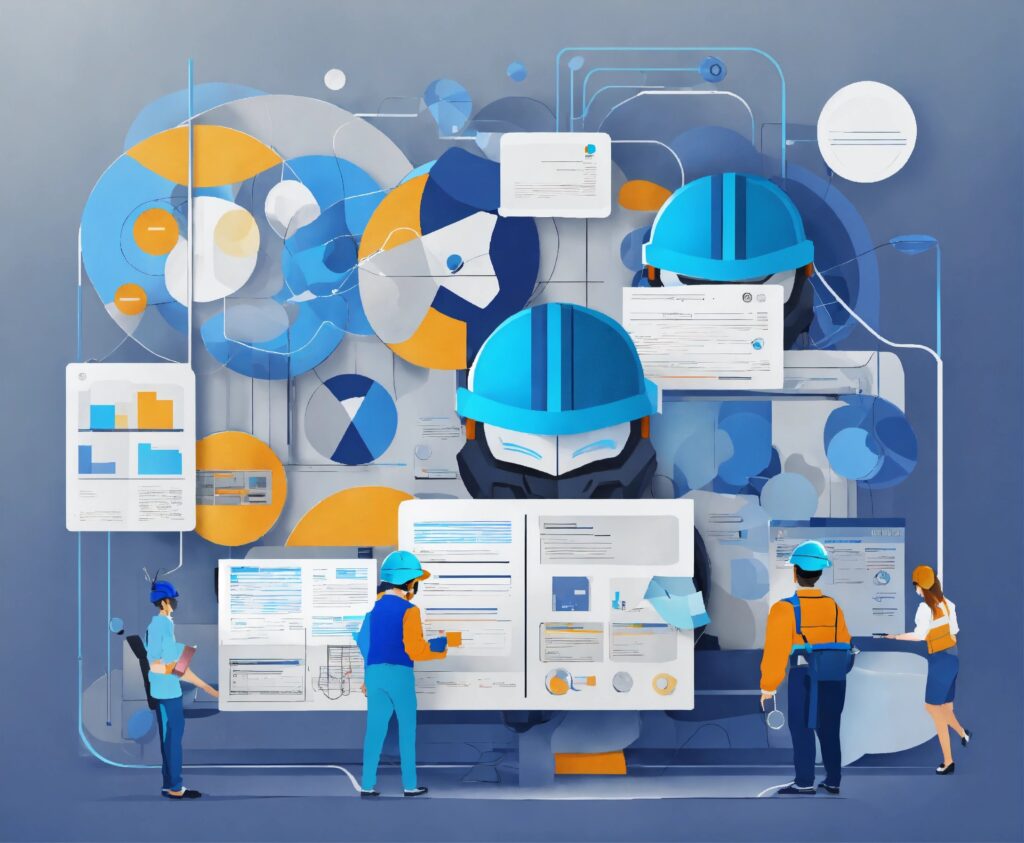In the fast-paced digital era, businesses are constantly seeking ways to stay competitive and efficient. One avenue that has gained significant traction is custom application development. This process involves crafting software solutions tailored to the specific needs and requirements of a business. Let’s delve into the world of custom application development and explore its nuances.
Table of Contents
Benefits of Custom Application Development
Tailored Solutions
Off-the-shelf software might not always align perfectly with a business’s unique processes. Custom applications address this by providing tailored solutions that streamline operations and enhance productivity.
Enhanced Security Features
Security is a paramount concern in today’s interconnected world. Custom applications allow businesses to implement robust security measures, safeguarding sensitive data and ensuring compliance with industry regulations.
Scalability and Flexibility
As businesses grow, so do their needs. Custom applications are designed with scalability in mind, allowing them to adapt seamlessly to changing requirements. This flexibility ensures that the software remains relevant in dynamic business environments.
Key Stages in Custom Application Development

Planning and Analysis
The initial stages involve a comprehensive analysis of the business’s requirements. This phase sets the foundation for the entire development process.
Design
The design phase focuses on creating a user-friendly interface and an efficient architecture that aligns with the business’s objectives.
Development
Skilled developers then bring the design to life, writing code and integrating functionalities to create a functional application.
Testing
Thorough testing is crucial to identify and rectify any bugs or issues. This phase ensures the final product meets high-quality standards.
Deployment
Once tested and approved, the custom application is deployed for use by the intended audience.
Maintenance and Updates
Regular maintenance and updates keep the application running smoothly and address any emerging needs or issues.
Popular Technologies for Custom Application Development
Custom application development involves creating software tailored to specific business needs or unique requirements. Several popular technologies are commonly used in custom application development to ensure flexibility, scalability, and efficiency. Here are some popular technologies for custom application development:
- Programming Languages:
- JavaScript: Widely used for building dynamic and interactive user interfaces. Popular frameworks like React and Angular are commonly used in web development.
- Python: Known for its readability and versatility, Python is used for web development, data analysis, artificial intelligence, and more.
- Java: A versatile language used for developing enterprise-level applications, mobile apps (Android), and web applications.
- C#: Commonly used with the Microsoft .NET framework for developing Windows applications and web services.
- Web Development Frameworks:
- Node.js: Allows developers to use JavaScript on the server side, facilitating the development of scalable and high-performance applications.
- Django (Python): A high-level web framework that encourages rapid development and clean, pragmatic design.
- Ruby on Rails: A web application framework written in Ruby that follows the convention over configuration (CoC) and don’t repeat yourself (DRY) principles.
- Mobile App Development:
- React Native: Enables the development of cross-platform mobile applications using JavaScript and React. Code can be reused for both iOS and Android.
- Flutter: Google’s UI toolkit for building natively compiled applications for mobile, web, and desktop from a single codebase.
- Swift (iOS) and Kotlin (Android): Native languages for iOS and Android app development, respectively.
- Backend Development:
- Express.js (Node.js): A minimalist web application framework for Node.js, suitable for building robust APIs.
- Spring Boot (Java): A framework for building Java-based enterprise applications, providing a comprehensive infrastructure for developing Java applications.
- Flask (Python): A lightweight web application framework for Python, suitable for small to medium-sized applications.
- Database Technologies:
- MongoDB: A NoSQL database that stores data in flexible, JSON-like documents, making it suitable for handling unstructured data.
- MySQL and PostgreSQL: Popular relational database management systems (RDBMS) used for structured data storage.
- Firebase: A platform that includes a real-time NoSQL database, authentication services, and hosting, suitable for building web and mobile applications.
- Cloud Computing Services:
- Amazon Web Services (AWS), Microsoft Azure, Google Cloud Platform (GCP): Cloud platforms that provide various services, including computing power, storage, and databases, allowing for scalable and flexible application development.
- Heroku: A cloud platform that simplifies application deployment and management, supporting multiple programming languages.
- Containerization and Orchestration:
- Docker: Enables containerization, allowing applications to be packaged with their dependencies for consistent deployment across different environments.
- Kubernetes: Orchestration tool for managing containerized applications, providing scalability, automation, and resource optimization.
- Frontend Libraries and Frameworks:
- React.js: A JavaScript library for building user interfaces, maintained by Facebook.
- Vue.js: A progressive JavaScript framework for building user interfaces, known for its simplicity and flexibility.
- Angular: A comprehensive framework for building dynamic web applications, maintained by Google.
- Artificial Intelligence and Machine Learning:
- TensorFlow, PyTorch: Frameworks for building machine learning models and neural networks.
- Scikit-Learn (Python): A library for machine learning, including tools for data preprocessing, model selection, and evaluation.
- APIs and Integration:
- RESTful APIs: Representational State Transfer APIs are commonly used for communication between applications over HTTP.
- GraphQL: A query language for APIs that allows clients to request specific data, reducing over-fetching and under-fetching of data.
These technologies offer a foundation for building a wide range of custom applications, and the choice depends on the specific requirements of the project, the skill set of the development team, and factors such as scalability, performance, and maintainability.
Challenges in Custom Application Development
While the benefits are compelling, the journey of custom application development is not without its challenges.
Budget Constraints
Custom development can be an investment, and businesses must carefully budget to ensure a positive return on investment.
Time Constraints
Developing a custom application takes time. Businesses must balance the need for a robust solution with the urgency to implement it.
Integration Issues
Custom applications must seamlessly integrate with existing systems. Incompatibility can lead to inefficiencies and disruptions in operations.
Choosing the Right Development Partner
Selecting the right development partner is crucial for the success of any custom application project.
Experience and Expertise
A development team with a proven track record and expertise in the relevant technologies is more likely to deliver a successful project.
Client Reviews and Testimonials
Reading reviews and testimonials from previous clients provides insights into the developer’s reliability and ability to meet expectations.
Portfolio Assessment
Examining the developer’s portfolio offers a glimpse into their past projects, showcasing their capabilities and the diversity of their work.
Trends in Custom Application Development
The landscape of custom application development is ever-evolving, with several trends shaping its trajectory.
Cloud Integration
The integration of cloud services enhances accessibility and ensures the seamless functioning of applications across various platforms.
Mobile Application Development
As mobile usage continues to surge, businesses are prioritizing the development of mobile applications to reach a broader audience.

AI and Machine Learning Integration
The incorporation of artificial intelligence and machine learning features adds intelligence and automation to custom applications, revolutionizing user experiences.
The Future of Custom Application Development
Emerging Technologies
The future holds exciting possibilities with emerging technologies such as blockchain, augmented reality, and virtual reality playing a pivotal role in shaping custom application development.
Evolving Business Needs
Adapting to the evolving needs of businesses will be crucial for the continued relevance and success of custom application development.
How to Start Your Custom Application Development Project

Starting a custom application development project involves careful planning and consideration of various factors to ensure its success. Here is a step-by-step guide to help you initiate your custom application development project:
- Define Project Objectives:
- Clearly outline the goals and objectives of your project. Understand what problems the application will solve, what functionalities it should have, and how it will benefit users.
- Conduct Market Research:
- Research your target audience, competitors, and industry trends. Identify user needs and preferences to inform the design and features of your application.
- Scope the Project:
- Define the scope of your project by outlining the features and functionalities required. Determine the key milestones and deliverables for each phase of development.
- Create a Project Plan:
- Develop a detailed project plan that includes timelines, resource allocation, and task dependencies. Identify potential risks and plan mitigation strategies.
- Choose Development Tools and Technologies:
- Select the programming languages, frameworks, and tools that align with the requirements of your project. Consider factors such as scalability, security, and ease of maintenance.
- Assemble Your Development Team:
- Build a team of skilled professionals, including developers, designers, project managers, and quality assurance specialists. Ensure that team members have the necessary expertise for your chosen technologies.
- Design the User Interface (UI) and User Experience (UX):
- Create wireframes and prototypes to visualize the layout and navigation of your application. Focus on creating an intuitive and user-friendly experience.
- Develop a Minimum Viable Product (MVP):
- Start development by building a Minimum Viable Product (MVP) that includes essential features. This allows you to gather user feedback early and make informed decisions for further development.
- Implement Functionality:
- Develop the core functionalities of your application based on the defined scope. Follow coding best practices, and regularly test and debug to ensure quality.
- Integrate Security Measures:
- Implement security measures to protect user data and the application from potential threats. Include features such as data encryption, secure authentication, and authorization.
- Perform Quality Assurance (QA) Testing:
- Conduct thorough testing to identify and fix bugs, usability issues, and performance concerns. Test the application across different devices and environments.
- User Acceptance Testing (UAT):
- Allow users or stakeholders to test the application to ensure it meets their expectations. Gather feedback and make any necessary adjustments before the final release.
- Deploy the Application:
- Deploy the application to the production environment. Ensure that all configurations are set up correctly, and monitor the application’s performance during and after deployment.
- Provide Ongoing Support and Maintenance:
- Offer ongoing support to address user inquiries, fix bugs, and implement updates. Regularly maintain the application to keep it secure and compatible with evolving technologies.
- Gather User Feedback for Iterative Improvements:
- Encourage users to provide feedback on the application’s performance and features. Use this feedback to make iterative improvements and plan for future updates.
- Document the Development Process:
- Document the entire development process, including architecture, codebase, and configurations. This documentation is valuable for future development, troubleshooting, and team onboarding.
- Plan for Scalability:
- Design the application with scalability in mind. Consider potential growth in users and data volume, and plan for infrastructure that can accommodate increased demand.
- Market and Promote Your Application:
- Develop a marketing strategy to promote your application. Utilize digital marketing channels, social media, and other methods to increase awareness and attract users.
By following these steps, you can lay a solid foundation for your custom application development project and increase the likelihood of delivering a successful and impactful solution. Regular communication, collaboration, and adaptability are crucial throughout the development process
Cost Considerations in Custom Application Development
Understanding the factors that influence costs and implementing effective budgeting strategies is essential for a successful custom application development project.
Security Measures in Custom Application Development
Importance of Robust Security
Security should be prioritized at every stage of development to protect sensitive data and maintain user trust.
Encryption and Data Protection
Incorporating encryption and robust data protection measures adds an extra layer of security to custom applications.
Measuring Success: Key Performance Indicators (KPIs)
Metrics such as user satisfaction, system performance, and efficiency can be used to assess the success of a custom application.
Testimonials from Businesses
Hearing from businesses that have successfully implemented custom applications provides valuable insights and instills confidence in the process.
Conclusion
In conclusion, custom application development stands as a powerful tool for businesses aiming to stay ahead in the digital landscape. The tailored solutions, enhanced security features, and scalability offered by custom applications address the unique challenges businesses face. As technology continues to advance, embracing custom application development becomes not just an option but a necessity for sustainable growth.
If You are interested in Popular Technologies then Do Check our Article on the Most Powerful Devices in DIY Electronics
FAQs
- What is custom application development?
- Custom application development involves creating software solutions tailored to the specific needs of a business.
- Why is security crucial in custom application development?
- Security is crucial to protect sensitive data and ensure compliance with industry regulations.
- How do I choose the right development partner for my project?
- Consider the partner’s experience, expertise, client reviews, and portfolio before making a decision.
- What are the emerging trends in custom application development?
- Emerging trends include cloud integration, mobile application development, and the integration of AI and machine learning.
- How can businesses measure the success of a custom application?
- Success can be measured through key performance indicators such as user satisfaction, system performance, and efficiency.








One Comment